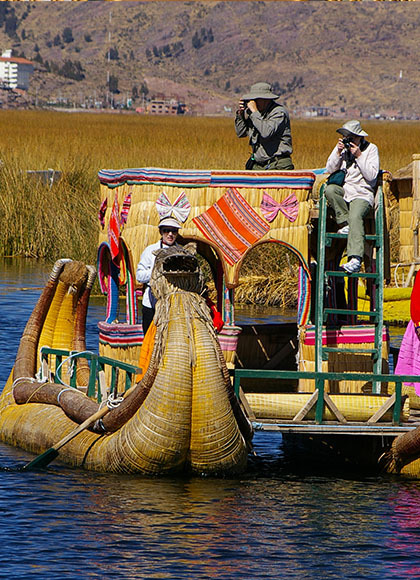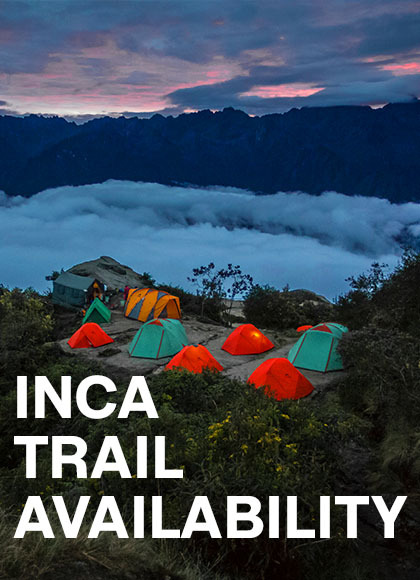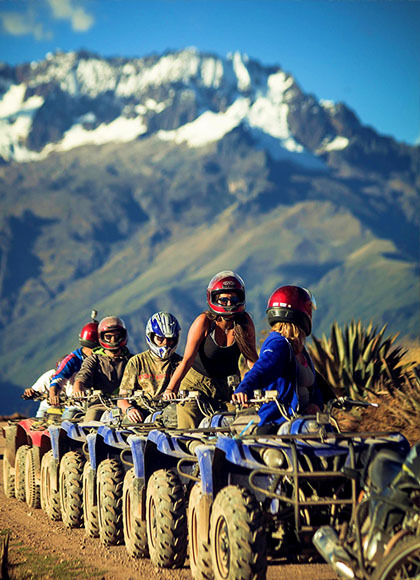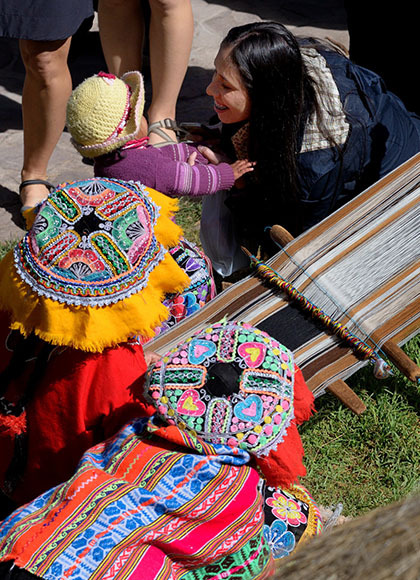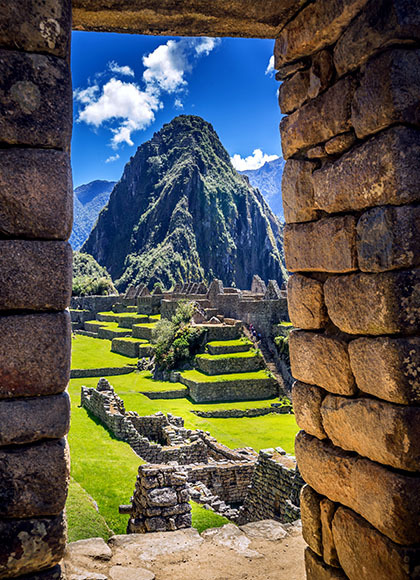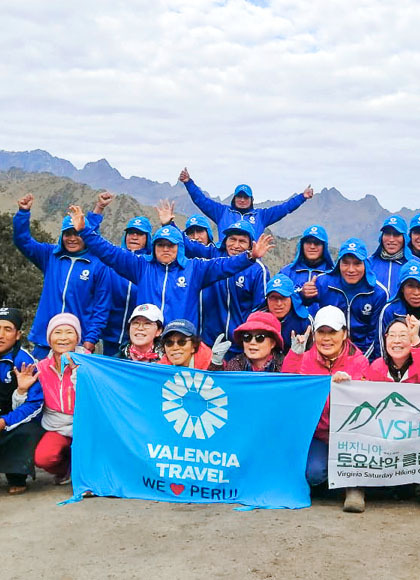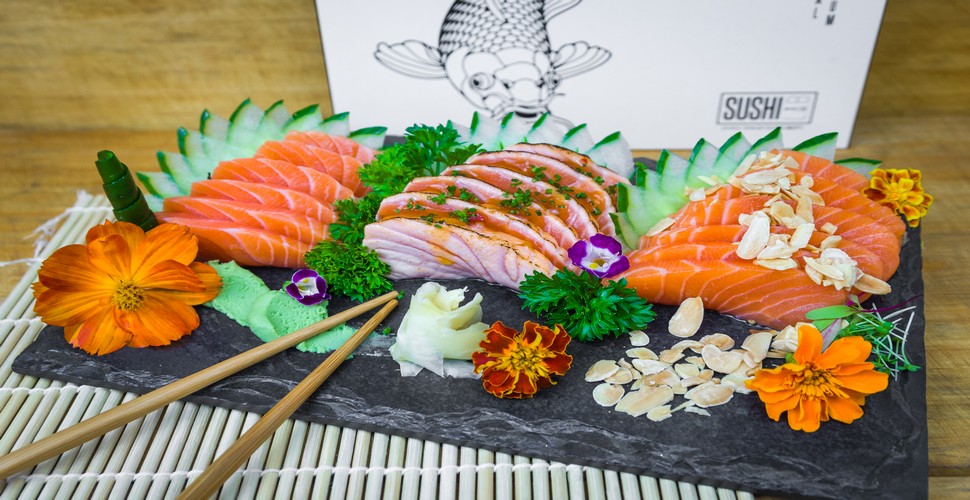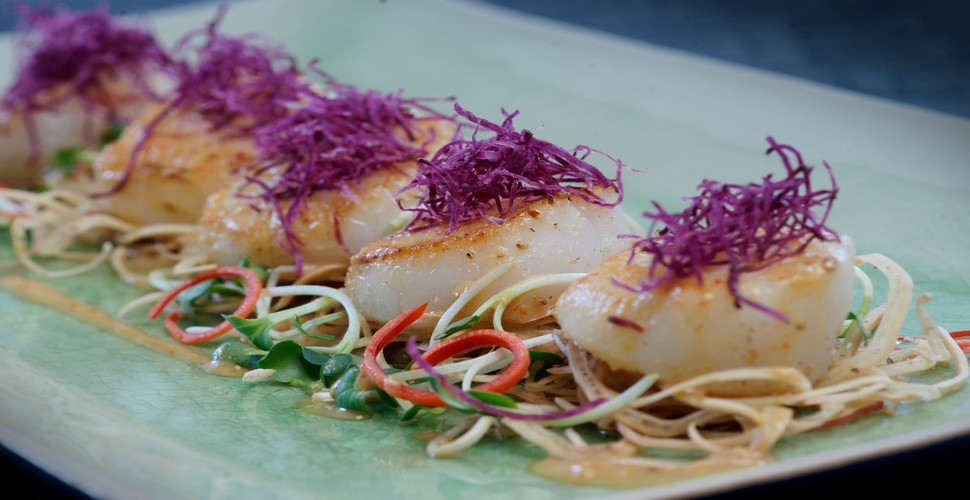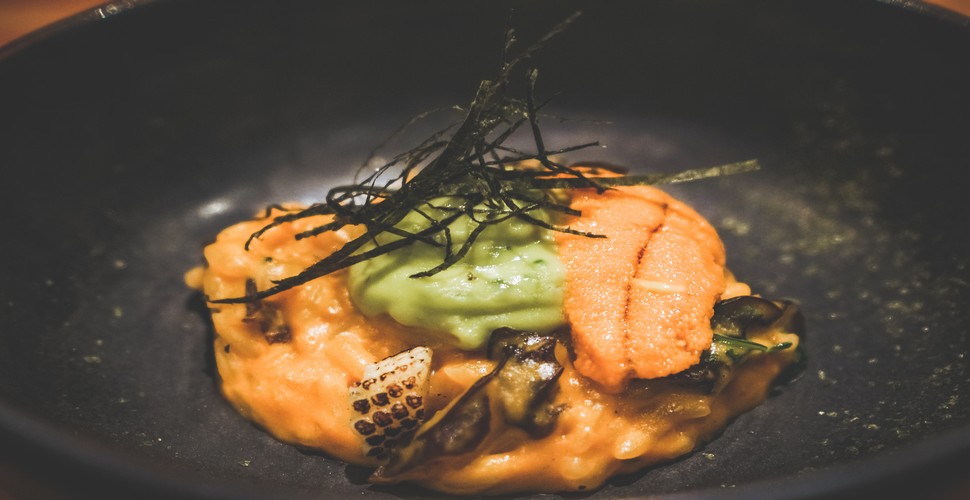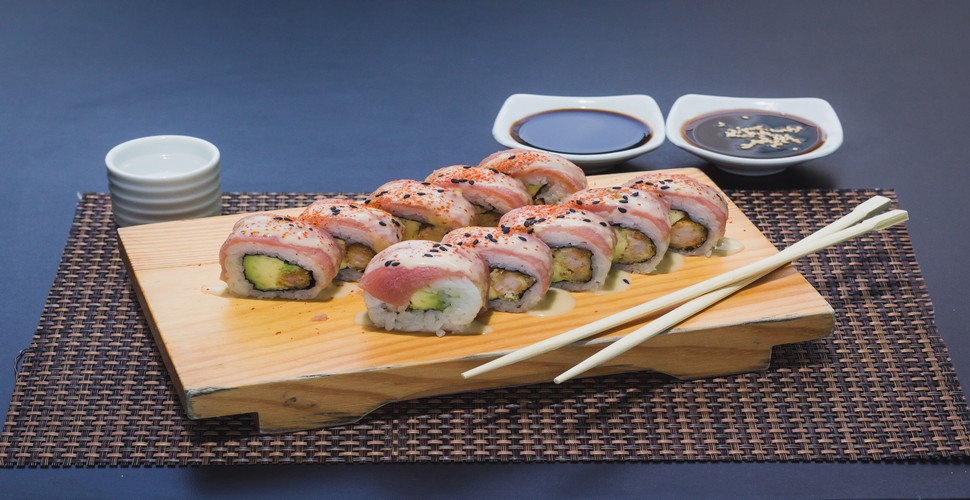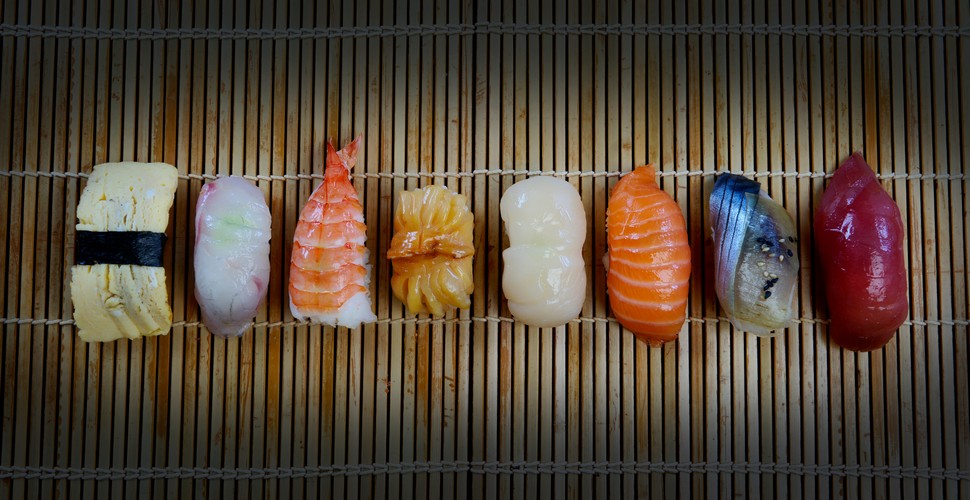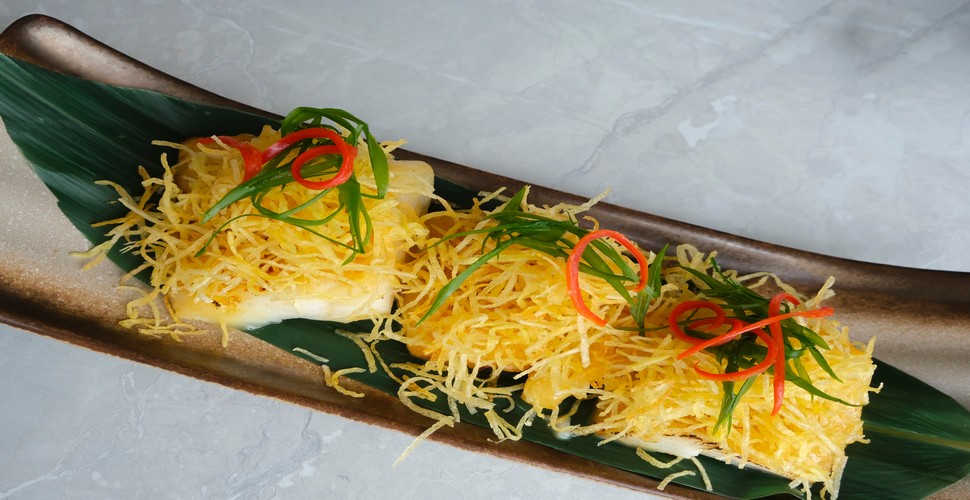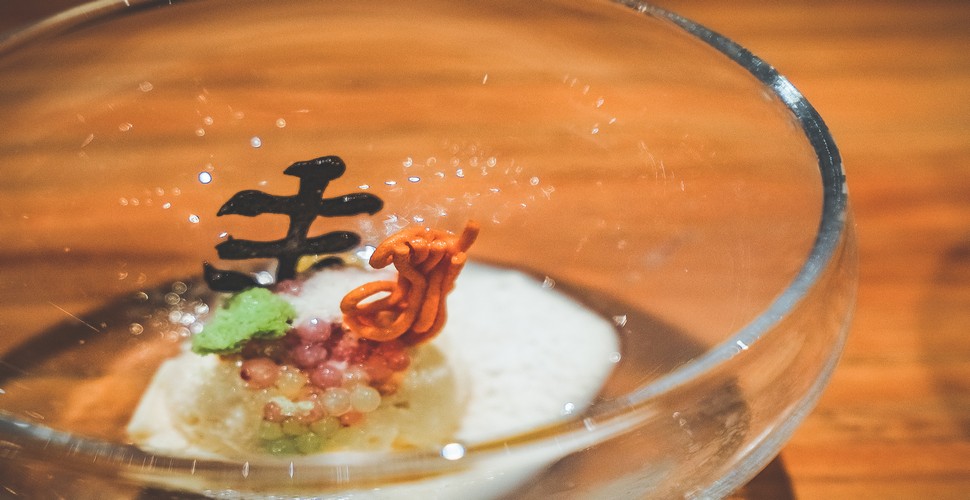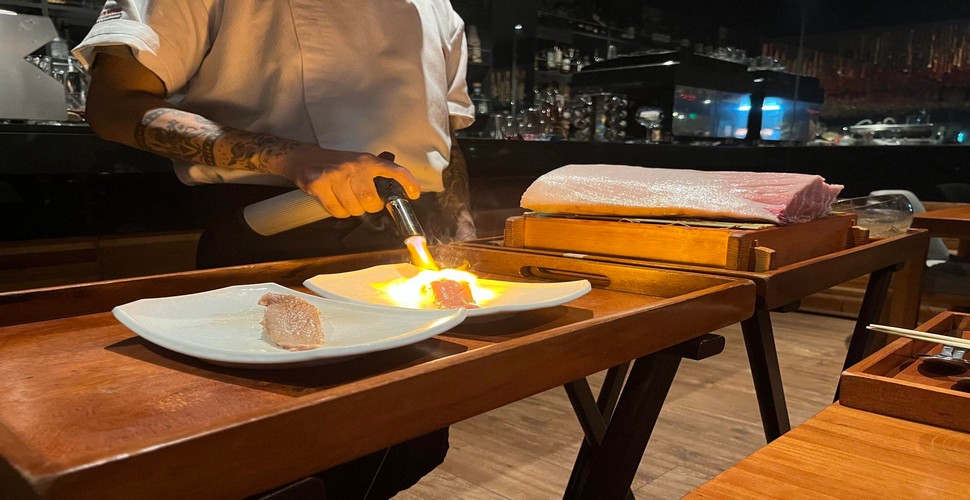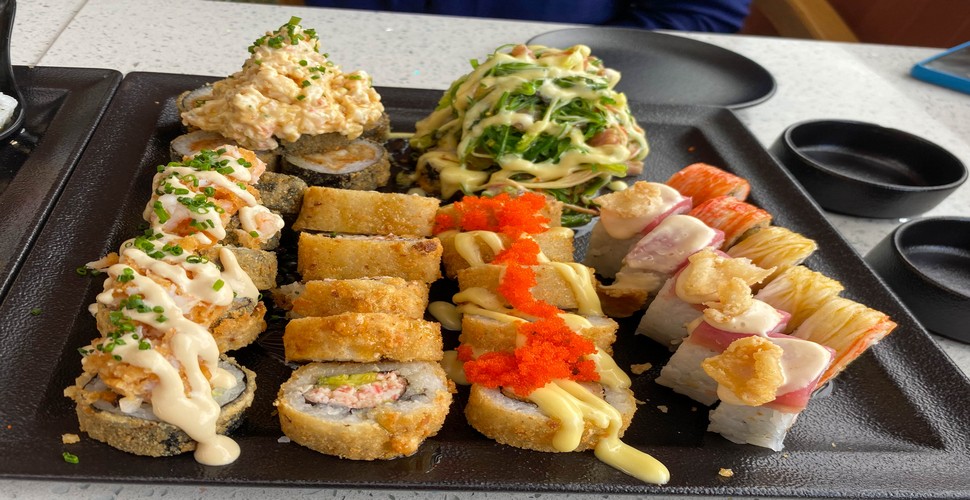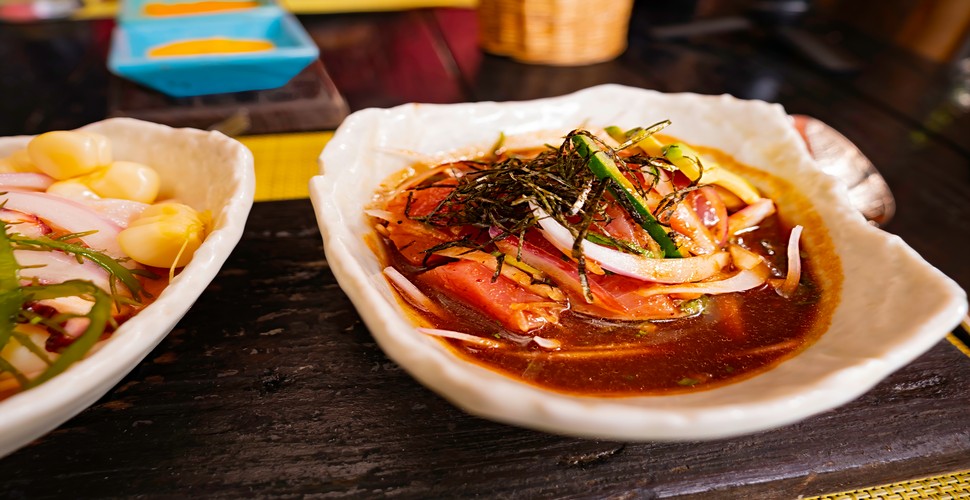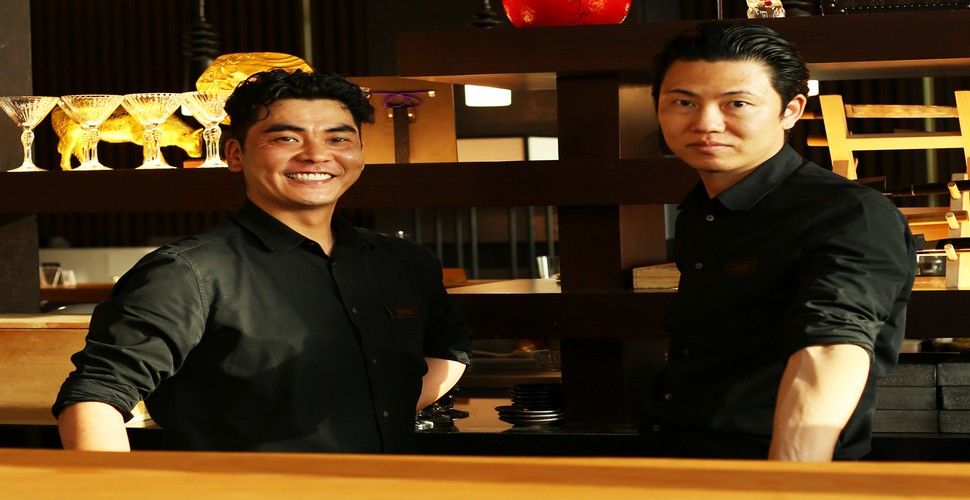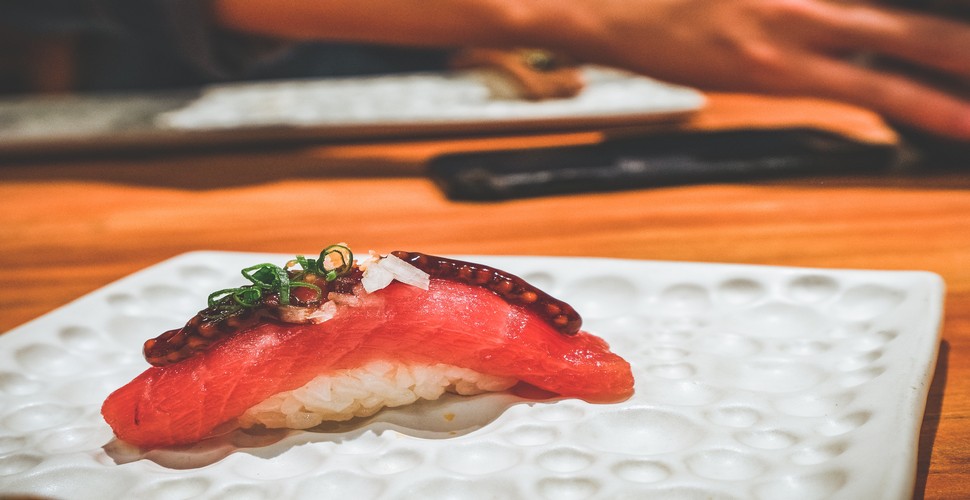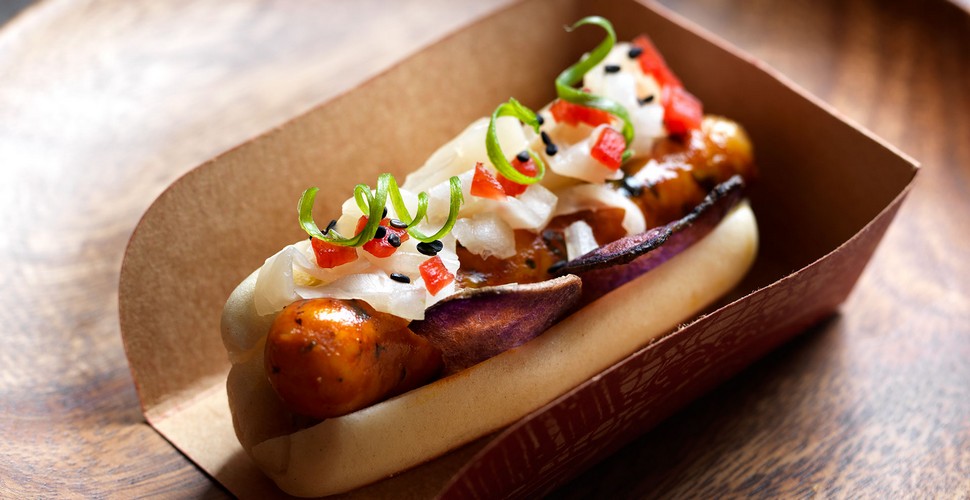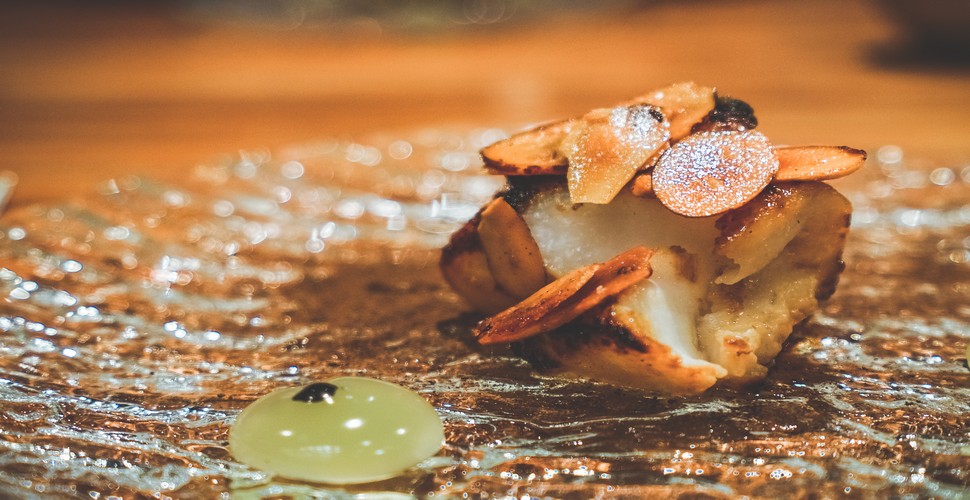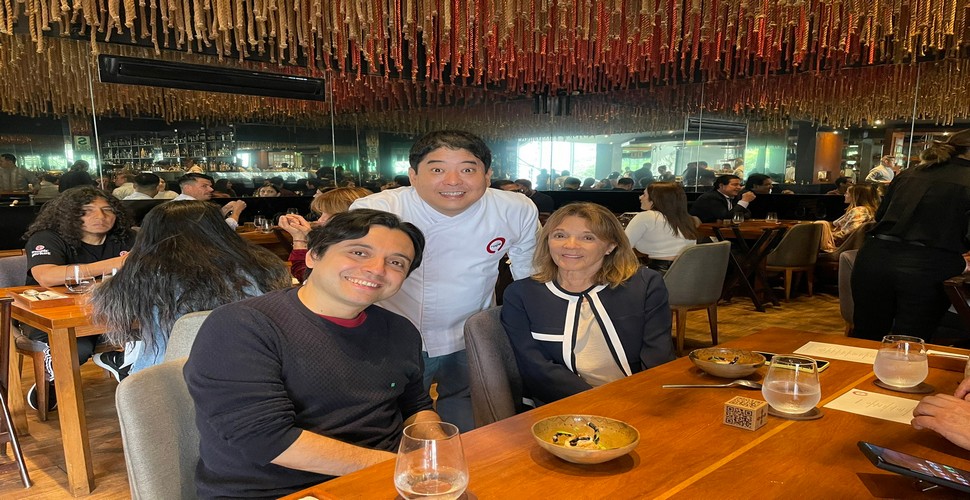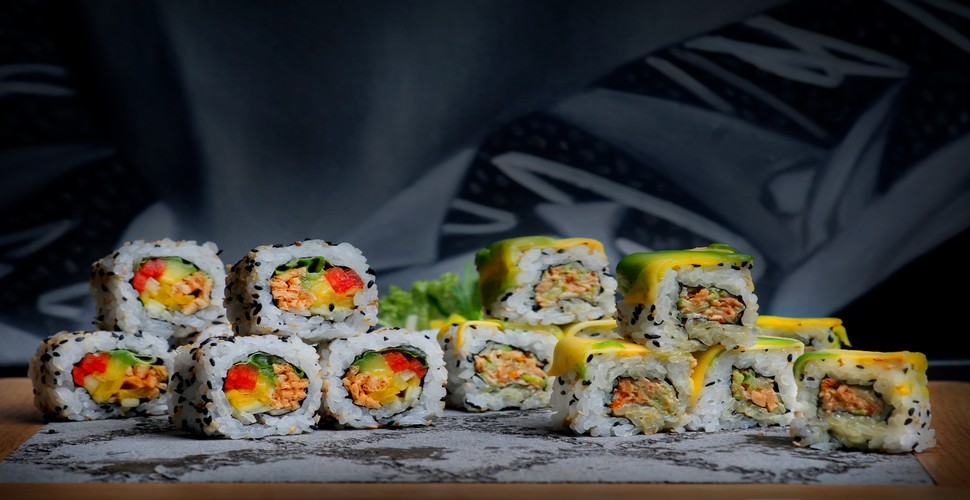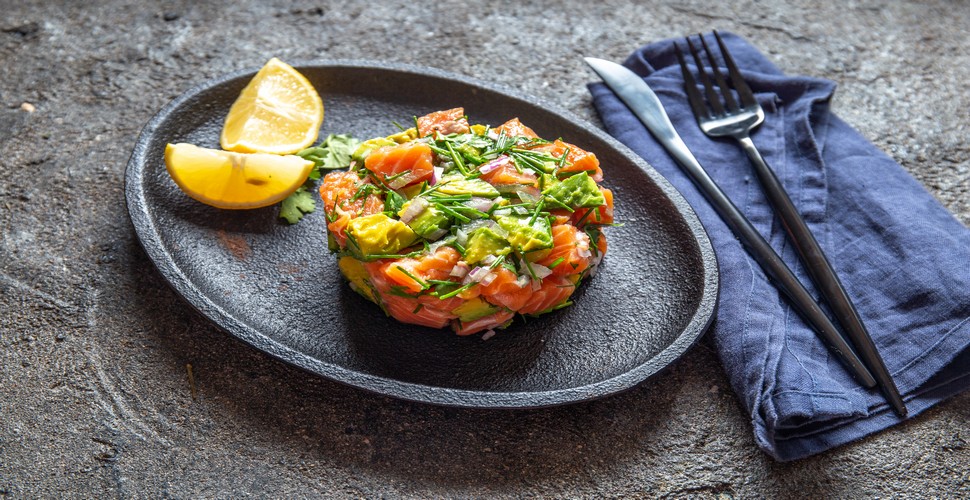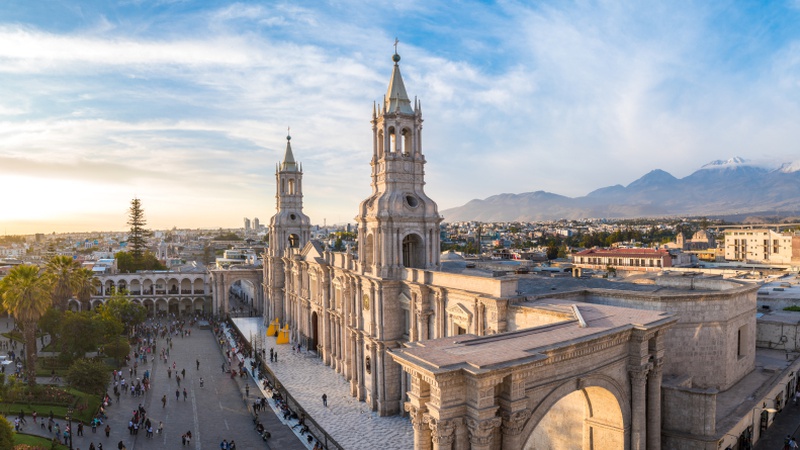
Written by:Claire Dean
Published: 21-08-2023
Peru, a land of diverse landscapes, rich history, and vibrant culture, has become a gastronomic paradise for travelers from around the globe. But what truly sets Peru's culinary scene apart is its unique fusion of Japanese and Peruvian flavors, a delicious phenomenon that offers a fascinating journey for both food enthusiasts and adventurers. Here, we delve into the captivating story behind the fusion of Japanese and Peruvian cuisines, the elite gastronomy of Peru, and even how it parallels the excitement of a football match in Peru or even throughout the world!
Gourmet Nikkei Dish from Peru
A Culinary Crossroads: The Origins
Peru's culinary journey took an unexpected turn in the late 1800s when Japanese immigrants began arriving on its shores. Seeking better opportunities, these immigrants brought their culinary traditions and techniques with them, resulting in a remarkable cross-cultural exchange. Over time, these flavors and techniques intertwined with Peru's own culinary heritage, leading to the birth of Nikkei cuisine – a harmonious blend of Japanese precision and Peruvian boldness.
Nikkei Scallops
The Flavors of Fusion
Nikkei cuisine isn't just about combining ingredients; it's about creating harmonious flavors that play on contrasting tastes and textures. Take, for instance, the popular dish "tiradito." This dish marries the Japanese art of sashimi with Peru's zesty ceviche, resulting in thinly sliced fish doused in tangy, flavorful sauces – a true embodiment of the fusion's success.
Experimental Squid Dish from Maido
From Sushi to Causa
One of the most iconic examples of this culinary marriage is the "acevichado" sushi roll. Here, the traditional sushi roll takes on a Peruvian twist with a topping of marinated ceviche-style seafood, adding a burst of citrusy freshness to every bite. Similarly, "causa" – a Peruvian dish traditionally made with mashed yellow potatoes – has been reimagined by incorporating Japanese elements like avocado and sashimi, creating a dish that's as visually stunning as it is delectable.
Peruvian Makis
A Parallel to Football
The fusion of Japanese and Peruvian cuisines isn't just a culinary experience; it's a metaphorical match that mirrors the excitement of a football game. Just as players from different backgrounds come together to create a seamless team, the ingredients from both cultures collaborate to craft dishes that tantalize the taste buds. The thrill of the unexpected, the joy of successful execution, and the appreciation of the final result – all these elements are shared between the football pitch and the dining table.
A Fusion of Eclectic Flavors
A Taste of Togetherness
In a world where boundaries are increasingly blurred, the fusion of Japanese and Peruvian cuisines serves as a reminder that diversity can lead to extraordinary results. This culinary union transcends geographical borders and brings people together to celebrate the magic that happens when cultures collide.
Maido, top 10 Restaurants in the world to try Nikkei Fusion Gastronomy
Embarking on Your Culinary Expedition
As you embark on your journey through the culinary landscapes of Peru, make sure to explore the delightful world of Nikkei cuisine. From street food stalls to upscale restaurants, the flavors of Japan and Peru intertwine in a symphony of taste that will undoubtedly leave an indelible mark on your palate.
Gourmet Japanese-Peruvian Fusion
Why Embark on a Culinary Adventure Through Peru?
Embarking on a culinary journey through Peru offers a unique opportunity to unravel the fascinating fusion of Japanese and Peruvian flavors. Discover the intricate dance between these two culinary traditions and witness how Japan's influence has left an indelible mark on Peru's vibrant gastronomic landscape. Peru is famous for its exquisite cuisine and the Japanese immigrants have left their mark on the delicious local gastronomy. Explore the fascinating fusion of these two delectable culinary influences on your journey through Peru on your Peru Tour Package.
Cooked at The Table
Why is This Culinary Adventure in Peru Worth It?
This culinary escapade of Japan vs Peru is an absolute delight for those seeking not only the richness of Peruvian cuisine but also the intriguing interplay with Japanese culinary elements. From the streets of Lima to the high-altitude kitchens of Cusco, every bite tells a story of the harmonious blend of two distinct culinary worlds. Nikkei cuisine is a culinary style that emerged from the cultural fusion of Japanese and Peruvian culinary traditions. The term "Nikkei" refers to the Japanese diaspora and their descendants who settled in various countries, including Peru. The cuisine originated in the late 19th and early 20th centuries when Japanese immigrants arrived in Peru and brought their culinary techniques, ingredients, and flavors.
Maido Restaurant
Different Itinerary Options for a Culinary Adventure in Peru
Craft your itinerary to focus on the Japanese influence on Peruvian food. Explore renowned Nikkei restaurants in Lima, where chefs expertly marry traditional Japanese techniques with Peru's diverse ingredients. Visit culinary hotspots where this cross-cultural exchange is most palpable.
Itinerary 1:
Day 1: Arrival in Lima
Explore Miraflores district, known for its Nikkei culinary scene.
Lunch at a renowned Nikkei restaurant like Maido or Osaka.
An evening stroll along the Malecón de Miraflores.
Day 2: Culinary Exploration in Barranco
Explore Barranco district, known for art and culture.
Visit local markets for fresh produce.
Participate in a Nikkei cooking class and enjoy lunch.
Dinner at a Nikkei eatery in Barranco.
Day 3: Historic Lima and Ceviche Tasting
Explore Lima's historic center.
Morning coffee with a Nikkei pastry twist.
Lunch at a cevicheria, exploring Nikkei variations.
Nightlife exploration in Miraflores.
Day 4: Market Tour and Fusion Desserts
Guided tour of a local market.
Indulge in Nikkei-inspired desserts at a patisserie.
Afternoon treats at a dessert-focused Nikkei restaurant.
Farewell dinner at a top-rated Nikkei establishment.
Day 5: Departure
Final Nikkei-inspired breakfast.
Purchase local ingredients or snacks for souvenirs.
Departure with memories of a remarkable Nikkei culinary journey in Peru.
Itinerary 2:
Nikkei Culinary Tour: Lima, Cusco, Arequipa (6 Days)
Day 1: Arrival in Lima
Evening at Maido, a renowned Nikkei restaurant in Miraflores.
Day 2: Culinary Hub: Miraflores & Barranco
Lunch at Osaka, a fusion of Japanese and Peruvian flavors.
Afternoon Nikkei cooking class in Barranco.
Dinner at Canta Rana for Nikkei street food.
Day 3: Coastal Retreat: Paracas
Lunch at La Trattoria, famous for seafood Nikkei dishes.
Sunset dinner at El Chaco overlooking Ballestas Islands.
Day 4: Historical Roots: Trujillo
Lunch at Nikkei 447, blending tradition and innovation.
Dinner at La Esquina de Trujillo for local Nikkei favorites.
Day 5: Andean Flavors: Cusco
Lunch at Chicha by Gastón Acurio, Andean-Nikkei fusion.
Dinner at Limo, a Cusco gem with creative Nikkei dishes.
Day 6: Majestic Arequipa
Lunch at La Nueva Palomino, blending Nikkei with Arequipeño cuisine.
Farewell dinner at Zig Zag for modern Nikkei twists.
Day 7: Departure
Brunch at Café de la Plaza, a charming spot with Nikkei-inspired breakfast.
Departure with Nikkei culinary memories from Lima, Cusco, and Arequipa.
Nikkei Sushi Selection
How Difficult is a Culinary Trip in Peru?
While the journey is a culinary delight, it is not without its challenges. Navigating the intricacies of Nikkei cuisine, understanding the cultural nuances, and grasping the unique flavors may pose a moderate challenge. However, the rewards of this adventure lie in the discovery of a culinary symbiosis that transcends borders.
Culinary Diversity:
Difficulty Level: Moderate
Considerations: Embracing a diverse range of flavors and ingredients, including unique Japanese-Peruvian fusions, might be challenging for those less adventurous with their palate. However, most establishments offer a variety of options to cater to different tastes.
Language Barrier:
Difficulty Level: Low to Moderate
Considerations: While many establishments catering to tourists have English-speaking staff, venturing into local markets and more authentic eateries might involve some language barriers. Learning a few basic Spanish phrases can enhance your experience.
Altitude in Some Regions:
Difficulty Level: Moderate (specific to high-altitude areas like Cusco)
Considerations: If your culinary journey takes you to high-altitude regions like Cusco, altitude sickness may be a concern. Gradual acclimatization, staying hydrated, and choosing lighter meals can help mitigate this.
Navigating Local Markets:
Difficulty Level: Low to Moderate
Considerations: Exploring local markets may be overwhelming for some, especially if you're not accustomed to the vibrant and bustling atmosphere. Engaging with locals and tour guides can make the experience more enjoyable.
Transportation and Logistics:
Difficulty Level: Low to Moderate
Considerations: Coordinating transportation between different cities (Lima, Cusco, Arequipa) may require some planning. Domestic flights are common and efficient, but ground transportation can vary.
Cultural Differences:
Difficulty Level: Low
Considerations: Understanding and respecting local customs, especially in more traditional areas, is essential. Familiarize yourself with dining etiquette and cultural nuances to ensure a positive and respectful experience.
Availability of Reservations:
Difficulty Level: Low to Moderate
Considerations: Popular Nikkei restaurants, especially in Lima, may require advance reservations. It's advisable to plan your dining experiences ahead, especially if you have specific establishments in mind.
Health Precautions:
Difficulty Level: Low
Considerations: Ensuring food safety and hygiene is crucial. Stick to well-reviewed establishments and be cautious with street food. Checking travel advisories and health recommendations is recommended.
Nikkei Fried Ceviche
Trip Advisor Comments
"The fusion of Japanese precision with Peruvian flair at a Nikkei restaurant in Miraflores was a revelation! A must-try for anyone fascinated by the confluence of these two incredible cuisines."
"Exploring the historic influences of Japanese immigrants on Peruvian ceviche was a highlight of my journey. The unique blend of flavors is a testament to the cultural exchange that defines Peruvian gastronomy."
Maido - Lima:
"An absolute must for any foodie! The tasting menu at Maido takes you on a journey through the incredible fusion of Japanese and Peruvian flavors. Each dish is a masterpiece, and the attention to detail is unmatched."
Osaka - Lima:
"Osaka is a culinary gem! The blend of Japanese techniques with Peruvian ingredients creates an explosion of flavors. The sushi here is exceptional, and the ambiance adds to the overall dining experience."
Canta Rana - Lima:
"Ventured off the beaten path to Canta Rana and was rewarded with amazing Nikkei street food. The ceviche with a Japanese twist was a revelation, and the lively atmosphere made for a memorable night."
La Trattoria - Paracas:
"La Trattoria exceeded expectations! Fresh seafood prepared with Nikkei influences made for a delightful lunch. The view of the ocean added to the charm. A perfect stop after exploring Paracas."
Nikkei 447 - Trujillo:
"Nikkei 447 captures the essence of Trujillo's Nikkei heritage. The menu is a brilliant fusion of tradition and innovation. The Tiraditos are a must-try, showcasing the unique blend of Japanese and Peruvian flavors."
Chicha by Gastón Acurio - Cusco:
"Chicha is a culinary jewel in Cusco! The Nikkei influence in the dishes was unexpected and delightful. The quinoa sushi was a highlight. A perfect blend of Andean and Japanese flavors."
Limo - Cusco:
"Limo offers a contemporary take on Nikkei cuisine in Cusco. The ambiance is chic, and the dishes are a creative exploration of flavors. The Nikkei-inspired desserts were the perfect way to end the meal."
La Nueva Palomino - Arequipa:
"La Nueva Palomino brilliantly combines Nikkei influences with traditional Arequipeño dishes. The result is a culinary experience that pays homage to the local culture while offering a fresh twist."
Zig Zag - Arequipa:
"Zig Zag is a hidden gem in Arequipa. The Nikkei twists in their dishes are inventive and delicious. The presentation is as impressive as the flavors. A great choice for a farewell dinner."
See more information on TripAdvisor about Nikkei Food here
Bartenders at Maido Restaurant
Best Time to Do a Culinary Trip in Peru
Plan your adventure during Peru's dry season (April to October) for optimal travel conditions and vibrant culinary festivals. This ensures a delightful exploration of the Japanese influence on Peruvian dishes amidst favorable weather.
Red Ceviche
Can You Do This Culinary Trip in Peru on Your Own?
Absolutely. Independent travelers have the flexibility to dive into the heart of Nikkei cuisine at their own pace. Engage with local chefs, explore hidden gems, and savor the nuances of this culinary fusion independently.
Maido Restaurant
What to Consider When You Choose This Type of Culinary Trip
Culinary Preferences
Assess your openness to trying new and diverse flavors. Nikkei cuisine involves a unique fusion of Japanese and Peruvian elements, so an adventurous palate will enhance your experience.
Dietary Restrictions
If you have dietary restrictions or preferences, research the menus of Nikkei restaurants in advance. While many establishments are accommodating, it's helpful to be aware of the available options.
Interest in Culinary Exploration
Evaluate your interest in delving into the culinary traditions of both Japan and Peru. If you're passionate about food and enjoy exploring diverse cuisines, a Nikkei culinary trip is ideal.
Openness to Cultural Exchange
Embrace the cultural exchange inherent in Nikkei cuisine. Consider engaging with chefs, locals, and fellow travelers to learn more about the history and stories behind the dishes.
Exploration of Local Markets
If you enjoy exploring markets and tasting local ingredients, plan visits to markets in different cities. This can offer insights into the fresh produce and culinary diversity that influence Nikkei cuisine.
Language Proficiency
While many tourist-friendly places have English-speaking staff, some local markets or off-the-beaten-path eateries may have limited English. Basic Spanish phrases can be beneficial for a more immersive experience.
Altitude Considerations
If your itinerary includes high-altitude destinations like Cusco, be mindful of potential altitude sickness. Acclimatize gradually, stay hydrated and choose lighter meals to adapt to the altitude.
Restaurant Reservations
Check if popular Nikkei restaurants require reservations, especially in peak seasons. Planning ahead can ensure you secure a spot at renowned establishments.
Budget and Cost Considerations
Evaluate your budget for meals, activities, and accommodations. Nikkei cuisine can range from street food to fine dining, so plan accordingly based on your preferences and budget.
Flexibility in Itinerary
Consideration: Allow some flexibility in your itinerary to accommodate unexpected discoveries. Some of the best culinary experiences might come from local recommendations or hidden gems not initially planned.
Gourmet Nikkei
How to Get to the Destinations For Peruvian-Japanese Cuisine
Getting to destinations for Nikkei cuisine in Peru involves a combination of flights, ground transportation, and sometimes local exploration.
Lima
By Air:
International Flights: Most travelers arrive in Lima by flying into Jorge Chávez International Airport (LIM). There are direct flights from major cities around the world.
Domestic Flights: If you're already in Peru, domestic flights connect Lima to other cities within the country.
Ground Transportation:
Taxis and ride-sharing services are available at the airport. Ensure you use authorized services.
Lima has a well-connected bus system and taxi services for getting around the city.
Cusco
By Air:
Domestic Flights: If traveling from Lima, there are frequent domestic flights to Alejandro Velasco Astete International Airport (CUZ) in Cusco.
Ground Transportation:
From the airport, taxis and shuttles can take you to the city center.
Cusco has a compact city center, making it easy to explore on foot or by local transportation.
Arequipa
By Air:
Domestic Flights: Flights from Lima to Rodríguez Ballón International Airport (AQP) in Arequipa are common.
Ground Transportation:
Taxis or airport shuttles can take you to the city center.
Arequipa's city center is walkable, and taxis are readily available.
Local Transportation:
In each city, consider using local transportation like buses, taxis, or ride-sharing services to navigate between culinary destinations.
Walking:
Many culinary hotspots, especially in areas like Miraflores in Lima, are accessible on foot. Walking allows you to explore neighborhoods and discover hidden gems.
Tours and Cooking Classes:
Consider joining culinary tours or cooking classes, often organized by local providers. These experiences can include transportation to various culinary sites.
Nikkei Choripan
Essential Packing List
Clothing and Accessories:
-
Comfortable Clothing: Lightweight and breathable clothing for warm climates
-
A mix of casual wear for exploring and dining.
-
Sweater or Jacket: Evenings can be cool, especially in high-altitude areas like Cusco.
-
Comfortable Walking Shoes: Comfortable shoes for exploring markets, neighborhoods, and historical sites.
-
Rain Jacket or Poncho: Peru can experience varying weather conditions. A compact rain jacket is handy.
-
Sun Protection: Sunscreen, sunglasses, and a wide-brimmed hat for protection in sunny areas.
-
Travel Umbrella: for the unexpected downpour.
-
Reusable Water Bottle: Stay hydrated, especially in high-altitude regions.
-
Snacks: Portable snacks for energy between meals and during excursions.
-
Reusable Utensils and Tote Bag: Useful for picnics or takeout meals.
Electronics and Documentation:
-
Camera or Smartphone: Capture culinary experiences and scenic moments.
-
Portable Charger: Keep your devices charged for photography and navigation.
-
Adapters/Converters: Ensure your devices can be charged with local outlets.
-
Travel Documents: Passport, travel insurance, flight tickets, and any necessary visas.
-
Health Insurance and Vaccination Records: Carry necessary documents and be aware of health precautions.
Culinary Exploration Tools:
-
Notebook and Pen: Jot down culinary recommendations, recipes, or memorable experiences.
-
Local Currency: Carry some local currency for markets and smaller establishments.
-
Reusable Food Container: Useful for leftovers or street food.
Health and Wellness:
-
Basic First Aid Kit: Bandages, pain relievers, motion sickness tablets.
-
Altitude Sickness Medication: If your itinerary includes high-altitude areas like Cusco.
Miscellaneous:
-
Daypack or Tote Bag: Lightweight for carrying essentials during the day.
-
Travel Locks: Secure your luggage during transit.
-
Travel Guides/Phrasebook: Learn more about local cuisine and have basic language resources.
-
Travel Pillow and Blanket: Comfort items for long journeys.
Optional Items:
-
Cooking Class Attire: If participating in a cooking class, check if specific attire is required.
-
Travel Towel: Quick-drying towels can be useful during travel.
Top End Nikkei
How to Prepare for a Culinary Tour of Peru
1. Research Nikkei Cuisine:
Familiarize yourself with the basics of Nikkei cuisine, understanding the fusion of Japanese and Peruvian flavors. Explore popular dishes, key ingredients, and the cultural significance of this culinary style.
2. Destination Research:
Learn about the culinary scenes in Lima, Cusco, Arequipa, and other potential stops on your tour. Identify renowned Nikkei restaurants, local markets, and any upcoming food festivals or events.
3. Create a Culinary Wishlist:
Compile a list of Nikkei dishes and restaurants you want to try. Include both well-known establishments and hidden gems for a diverse culinary experience.
4. Plan Your Itinerary:
Outline your travel itinerary, including the cities you'll visit, the duration of your stay in each location, and any specific culinary experiences you want to prioritize.
5. Check Travel Requirements:
Ensure your passport is valid, and check if you need a visa to enter Peru. Confirm any travel restrictions or health requirements, especially considering the global situation.
6. Book Accommodations:
Reserve accommodations in advance, ensuring they are conveniently located to access culinary hotspots. Consider staying in neighborhoods known for their vibrant food scenes.
7. Book Culinary Experiences:
If you plan to take cooking classes or participate in food tours, book these experiences ahead of time. Popular classes may have limited availability.
8. Learn Basic Spanish Phrases:
While English is spoken in many tourist areas, knowing a few basic Spanish phrases can enhance your interactions with locals, especially in markets or smaller establishments.
9. Pack Accordingly:
Refer to the essential packing list provided earlier. Pack comfortable clothing, walking shoes, and any specific items you might need for culinary exploration.
10. Health Precautions:
Check if any vaccinations are recommended for the regions you'll be visiting. Pack a basic first aid kit and any necessary medications, including those for altitude sickness if applicable.
11. Money Matters:
Notify your bank of your travel dates, and carry a mix of cash and cards. Familiarize yourself with local currency and exchange rates.
12. Stay Informed:
Stay updated on travel advisories, local news, and any changes in your itinerary. Flexibility is key in travel planning.
13. Immerse Yourself in Local Culture:
Embrace the cultural aspect of Nikkei cuisine. Learn about the history of Japanese immigration to Peru and how it influenced the culinary landscape.
14. Connect with Locals:
Engage with locals for recommendations. Some of the best culinary experiences come from word-of-mouth suggestions.
15. Be Open-Minded:
Approach the culinary tour with an open mind and a willingness to try new flavors.
Egg at Maido
Tips on Altitude Sickness in Peru
Before the Trip
Gradual Acclimatization: If possible, plan your itinerary to allow for gradual acclimatization. Spend a day or two at a lower altitude before ascending to higher altitudes.
Stay Hydrated: Begin staying well-hydrated a few days before your trip. Proper hydration can help your body adjust to higher elevations.
Avoid Alcohol and Caffeine: Limit alcohol and caffeine intake before and during your time at high altitudes, as they can contribute to dehydration.
Consult a Healthcare Professional: If you have concerns about altitude sickness, consult with a healthcare professional before your trip. They may prescribe medications like acetazolamide to help prevent symptoms.
During the Trip
Stay Hydrated: Continue to drink plenty of water throughout your time at high altitudes. Dehydration can exacerbate altitude sickness symptoms.
Eat Light Meals: Consume light, easily digestible meals. Avoid heavy or greasy foods that can burden your digestive system.
Rest and Take it Easy: Allow time for rest and relaxation. Avoid strenuous activities, especially during the first day or two at high altitude.
Over-the-counter Medications: Consider carrying over-the-counter medications like ibuprofen or acetaminophen to manage symptoms like headaches.
Altitude-Related Products: Some people find relief from altitude sickness symptoms using products like coca tea or candies made from coca leaves, which are legal and widely available in Peru.
Avoid Smoking: If you smoke, consider refraining during your time at high altitudes, as smoking can further reduce oxygen intake.
Recognizing Symptoms: Familiarize yourself with the symptoms of altitude sickness, which can include headaches, nausea, fatigue, dizziness, and difficulty sleeping.
Seek Medical Attention if Necessary: If you experience severe symptoms or if symptoms persist, seek medical attention promptly. Some individuals may need to descend to lower altitudes.
Nikkei Parilla
General Travel Tips for a Culinary Tour in Peru
-
Insurance Coverage: Ensure your travel insurance covers potential medical issues related to altitude sickness.
-
Emergency Contacts: Keep emergency contact information readily available. Be aware of the location of medical facilities in the areas you'll be visiting.
-
Be Mindful of Altitude Changes: If your itinerary involves significant altitude changes, pay attention to how your body responds. Listen to your body and adjust your activities accordingly.
-
If exploring high-altitude regions like Cusco, take precautions for altitude sickness. Focus on light, Nikkei-inspired meals, stay hydrated, and acclimatize gradually.
Maido
Pro Tips For a Culinary Trip in Peru
Culinary Workshops: Consider joining Nikkei cooking classes to gain insights into the art of blending Japanese and Peruvian flavors.
Local Conversations: Engage with locals to uncover hidden gems, as some of the best Nikkei experiences are found through word of mouth.
Chicken Nikkei Style
How Much Does a Culinary Trip in Peru Cost?
The cost of Nikkei culinary tours in Peru can vary widely depending on several factors, including the duration of the tour, the cities included in the itinerary, the level of accommodation, the inclusion of guided culinary experiences, and the overall travel style. Here are some general guidelines:
Day Tours or Cooking Classes:
Short culinary experiences or cooking classes in a specific city may range from $50 to $200 per person.
Multi-Day Culinary Tours:
Longer culinary tours that span multiple cities and include a mix of dining experiences, cooking classes, and cultural activities can range from $1,000 to $5,000 or more per person. This often includes accommodation, meals, and guided activities.
Luxury Culinary Tours:
Luxury culinary tours that include high-end accommodations, exclusive dining experiences, and personalized services can go beyond $5,000 per person.
Customized or Private Tours:
Customized or private culinary tours, where the itinerary is tailored to individual preferences, can also vary significantly in cost. These tours tend to be more expensive due to the personalized nature of the experience.
DIY (Do-It-Yourself) Options:
If you plan the tour independently and book accommodations, meals, and activities separately, costs can be more flexible. Budget travelers can find affordable dining options and accommodations, especially in markets and local eateries.
It's essential to consider the following factors when estimating the cost:
Accommodation Level:
The type of accommodation, whether budget, mid-range, or luxury, will significantly impact the overall cost.
Transportation:
The mode of transportation (e.g., domestic flights, private transfers, public transportation) will contribute to the budget.
Guided Experiences:
The inclusion of guided culinary experiences, tours, or cooking classes can affect the overall cost.
Season and Timing:
High-demand seasons or special events may influence prices.
Inclusions:
Some tours may include all meals, while others may only cover specific culinary experiences. Confirm what is included in the tour package.
Personal Spending:
Additional personal spending on souvenirs, extra activities, and discretionary expenses should be factored in.
Mitsuharu “Micha” Tsumura
FAQs
What is Nikkei cuisine?
Nikkei cuisine is a fusion of Japanese and Peruvian culinary traditions, blending the flavors, techniques, and ingredients of both cultures. It originated from the Japanese immigrant community in Peru.
Which cities in Peru are known for Nikkei cuisine?
Lima is a major hub for Nikkei cuisine, especially in districts like Miraflores and Barranco. However, you can also find Nikkei influences in other cities like Cusco and Arequipa.
What are some popular Nikkei dishes to try?
Popular Nikkei dishes include tiraditos (a Peruvian dish similar to ceviche), sushi with Peruvian twists, anticuchos (grilled skewers), and nikkei-style causa (a mashed potato dish).
Are Nikkei culinary tours suitable for vegetarians or vegans?
Yes, many Nikkei restaurants offer vegetarian and vegan options. However, it's advisable to communicate dietary preferences in advance to ensure a satisfying culinary experience.
How can I book a Nikkei culinary tour in Peru?
You can book Nikkei culinary tours through travel agencies, tour operators specializing in culinary experiences, or directly with restaurants that offer cooking classes or guided food tours.
Is it necessary to speak Spanish for these tours?
While many tourist-friendly places have English-speaking staff, knowing some basic Spanish phrases can enhance your experience, especially in local markets or smaller establishments.
Can I join a group tour or are private tours more common?
Both group and private tours are available. Group tours are often more budget-friendly, while private tours offer a more personalized experience. The choice depends on your preferences and budget.
Do I need to be a food enthusiast to enjoy a Nikkei culinary tour?
While being a food enthusiast enhances the experience, anyone with an interest in trying new flavors and learning about the cultural fusion of Japanese and Peruvian cuisines can enjoy a Nikkei culinary tour.
Are these tours suitable for families with children?
Yes, many culinary tours offer family-friendly options. However, it's essential to check with the tour operator or restaurant in advance to ensure the suitability for children.
What is the best time of year to take a Nikkei culinary tour in Peru?
Peru's culinary scene can be enjoyed year-round. However, considering weather conditions and any specific events or festivals you'd like to attend can help determine the best time for your tour.
Are there any health considerations for Nikkei culinary tours, such as food allergies or dietary restrictions?
It's crucial to communicate any food allergies or dietary restrictions in advance when booking a tour. Many establishments are accommodating and can tailor dishes to meet specific needs.
Can I combine a Nikkei culinary tour with other cultural activities in Peru?
Absolutely. Many culinary tours include cultural activities, market visits, and historical site explorations. You can customize your itinerary to combine culinary experiences with other interests.
Are there specific regions in Peru known for the strongest Japanese influence?
Yes, Lima, especially the districts of Miraflores and Chorrillos, is renowned for its vibrant Nikkei culinary scene.
Is it necessary to make reservations at Nikkei restaurants in advance?
It is advisable, especially for popular establishments, to secure reservations in advance to ensure a spot.
Nikkei Sushi
In the end, "Japan vs. Peru" isn't just about two cuisines competing; it's about celebrating the vibrant history, the dynamic fusion, and the shared joy that both food and football bring to the table. So, whether you're an adventurous foodie or a football fanatic, Peru's culinary scene promises an experience that's both culturally rich and deliciously fulfilling. Find out more here about culinary tours in Peru and experience this magical culinary fusion for yourself!

